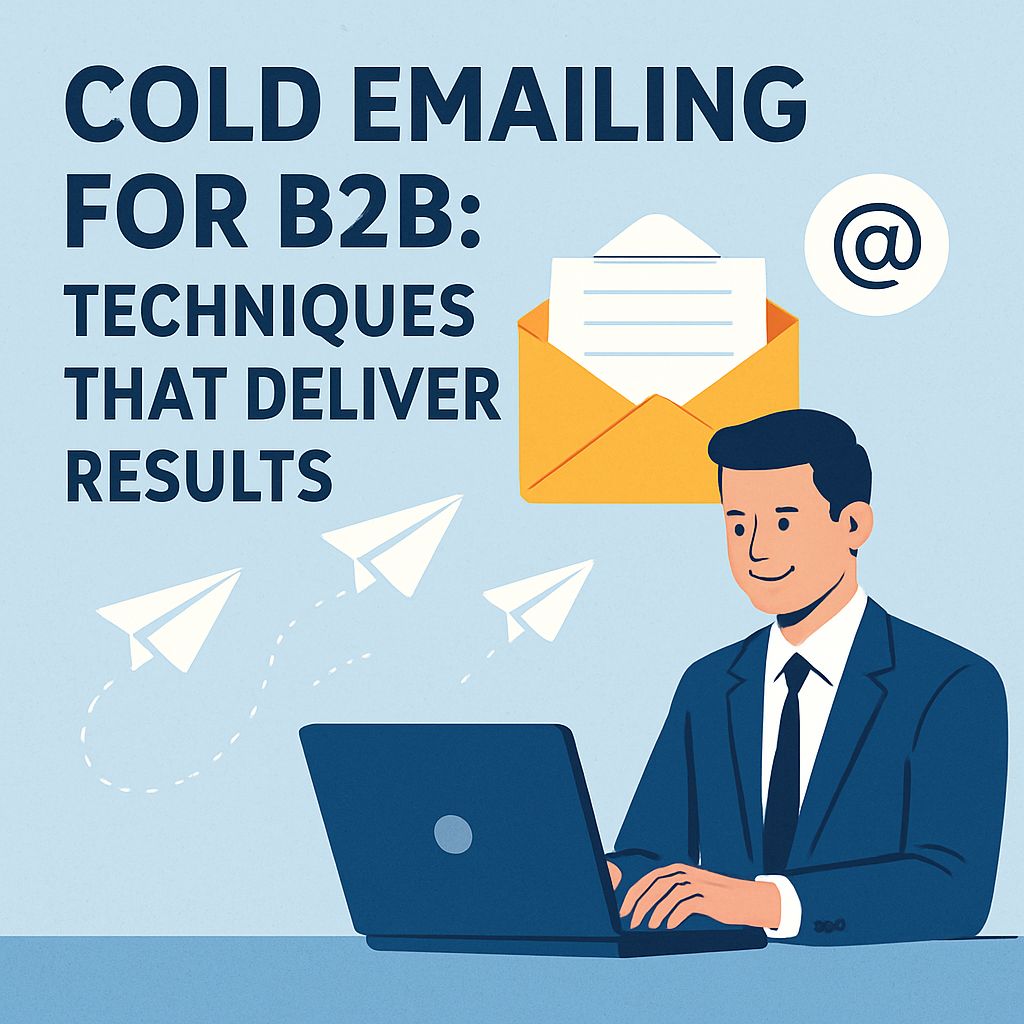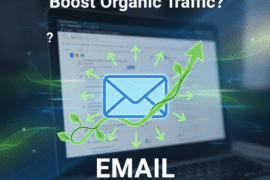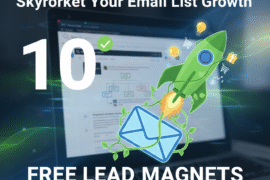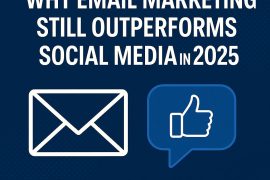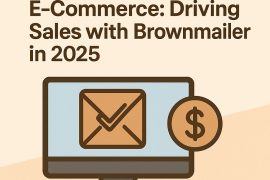In the ever-evolving landscape of B2B marketing, mastering the art of cold emailing can be the key to unlocking new business opportunities. As a professional seeking to expand your network and drive growth, you understand the importance of strategic communication. Cold emailing, when executed with precision and insight, transforms potential leads into valuable connections. This article delves into proven techniques that elevate your cold email strategy, ensuring your messages resonate and deliver tangible results. By refining your approach, you position yourself to engage recipients effectively, fostering relationships that pave the way for future success in your industry.
What Is Cold Emailing and Why Use It?
Understanding Cold Emailing
Cold emailing is a strategic approach employed in business-to-business (B2B) marketing where emails are sent to potential clients with whom there is no prior relationship. Unlike email marketing that targets subscribers, cold emailing seeks to introduce products or services, aiming to establish new connections and convert prospects into customers. It serves as an effective tool for generating leads, scheduling meetings, and forging partnerships.
Benefits of Cold Emailing
Cold emailing offers several distinct advantages. One of its primary benefits is scalability; it allows businesses to efficiently reach vast numbers of potential clients. It is also highly cost-effective compared to other lead-generation methods, making it accessible even to small teams. Additionally, cold emailing can be highly targeted. By utilizing an Ideal Customer Profile, businesses can segment their audience, ensuring messages reach the right individuals.
Personalization and Automation
With modern tools, cold emails can be automated without sacrificing the personal touch. These tools enable dynamic personalization by incorporating recipient-specific data, like names and company details, into the body of the email. This combination of personalization and automation helps to boost engagement rates, making cold emailing a powerful asset in the B2B marketing arsenal. Effective cold emailing involves crafting compelling messages, honing in on targeted audiences, and leveraging data-driven insights to refine outreach strategies, all of which are essential to delivering satisfactory results.
Cold Emailing vs. Email Marketing: Understanding the Differences
Audience and Purpose
Distinguishing between cold emailing and email marketing begins with understanding their respective audiences and objectives. Cold emailing is strategically employed to reach out to potential customers or clients with whom there is no prior relationship. The ultimate aim is to initiate a dialogue that leads to business opportunities or conversions. In contrast, email marketing targets existing customers or subscribers, focusing on nurturing the relationship through valuable content and offers. This approach enhances brand loyalty and retention, ensuring that your brand remains at the forefront of their minds as outlined by SalesBlink.
Personalization and Volume
These two approaches also diverge in their levels of personalization and volume. Cold emails demand a higher degree of customization to capture attention and demonstrate relevance to the specific recipient. This involves extensive research and crafting personalized messages. On the other hand, email marketing can operate on a broader scale, with more standardized messaging that can be automated and sent frequently. This efficiency enables brands to maintain consistent communication with their customer base according to Benchmark Email.
Tools and Tactics
The tools employed for each strategy further highlight their differences. Cold emailing requires specialized tools for prospect research and email verification to ensure precision and effectiveness. Conversely, email marketing typically utilizes platforms designed for managing subscriber lists, automating campaigns, and analyzing metrics such as open and click-through rates as detailed by SalesHandy. While each method serves unique purposes, integrating both into your communication strategy can yield comprehensive benefits, allowing you to optimize outreach to new prospects and ongoing engagement with existing customers.
The 30/30/50 Rule for Cold Emails: A Strategy for Success
Understanding the Rule
The 30/30/50 rule for cold emailing in B2B environments offers a structured approach to enhance email outreach campaigns. This strategy is predicated on dividing the focus of a campaign into three distinct components: 30% is centered on content and structure, 30% emphasizes the quality of the prospect list, and a substantial 50% relies on follow-up efforts. This breakdown underscores the multifaceted nature of cold emailing, reminding marketers that success hinges on various elements working in harmony.
Crafting Engaging Content
Within this framework, the content and structure of your cold email occupy a vital role as highlighted by Coldlytics. Craft emails that are concise and focused, generally suggested to be between 50 and 125 words. An engaging subject line, an enticing opening sentence, and a value-driven message are essential components. Make sure to personalize the content to resonate with your recipient’s interests or needs.
The Quality of the Prospect List
A keen focus on developing a high-quality prospect list ensures you’re reaching out to the right people. Segment your list based on industry or other relevant criteria to increase engagement. By doing so, you avoid the pitfalls of indiscriminate spam emails, instead fostering meaningful connections with potential clients.
Follow-Ups: The Crucial Component
The follow-up process carries the heaviest weight in the 30/30/50 rule, as it can significantly boost response rates. Evidence suggests that including follow-ups can increase the likelihood of a response by up to threefold as noted by Beehiiv. Follow-up emails signal to your prospects that their responses are valued, fostering a sense of importance and engagement with your message.
How to Write a Cold Email: A Step-by-Step Process
Establish Credibility
Starting with the “from” line is crucial to establishing trust and credibility. It should align with the tone and style of your email, as this consistency builds confidence in your message. Incorporate your name and company details clearly, ensuring the recipient recognizes your credibility right away. According to expert advice, this step lays the foundation for a successful cold emailing strategy.
Craft a Compelling Subject Line
Your subject line must captivate the recipient’s attention without being overtly sales-focused. Instead, aim to pique curiosity and spark the interest of your reader. The subject line is often the deciding factor in whether an email gets opened, and a dynamic, intriguing line can significantly enhance open rates. This guide emphasizes its importance in initiating beneficial business relationships.
Personalize Your Introduction
Begin your email by addressing the recipient directly. Demonstrate that you’ve done thorough research by mentioning their expertise or recent achievements. This personalization extends beyond mere politeness; it shows that your email is tailored specifically to them and underscores the value you believe they can gain from your proposition. The introduction serves as the perfect segue into your main pitch, presenting an opportunity to highlight your solution to their challenges.
Is It Legal to Send Cold Emails?
Understanding the Legal Framework of Cold Emails
Sending cold emails, especially in the B2B landscape, is generally permissible yet bounded by strict legal frameworks that govern this practice. It’s crucial to differentiate between a cold email and spam. While both are unsolicited, spam emails are typically sent in bulk and lack personalization, whereas cold emails aim for targeted communication.
In the United States, cold emails are regulated under the CAN-SPAM Act, which mandates accurate header information, non-deceptive subject lines, a valid physical address, and a clear opt-out mechanism for recipients. The European Union follows the General Data Protection Regulation (GDPR), necessitating either prior consent or a legitimate interest in contacting the recipient. Similarly, the United Kingdom enforces the Privacy and Electronic Communications Regulations (PECR), allowing cold emails to businesses but requiring consent when emailing individuals.
Essential Compliance Measures for Businesses
To adhere to these regulations, businesses must implement crucial compliance measures. It is vital to ensure that emails are relevant and personalized, thus distinguishing themselves from spam. Recipients should find it easy to opt-out of future communications, thus respecting their preferences and aligning with legal stipulations. Additionally, maintaining secure data practices enhances compliance and helps to avoid potential reputational damage.
By understanding and respecting these legal intricacies, businesses can leverage cold emails effectively without contravening international email marketing laws as detailed here.
Cold Emailing Best Practices to Achieve Your Outreach Goals
Personalization and Research
To set the stage for successful cold emailing, thorough research and personalization are indispensable. Begin by gathering relevant information about your prospect and their organization. This understanding allows you to tailor your message to their unique pain points and demonstrate genuine interest. Avoid one-size-fits-all approaches and ensure each email speaks directly to the recipient’s needs and challenges. Customization not only enhances engagement but also builds trust, laying the foundation for fruitful interactions.
Crafting Compelling Content
A well-crafted cold email should captivate from the get-go. Your subject line needs to be both concise and intriguing, making recipients curious to open the message. Inside, clarity is crucial. Highlight the value you can offer upfront, rather than launching into a sales pitch. Share industry insights or solutions that address the recipient’s specific problems. This approach positions you as a helpful partner rather than just another salesperson seeking to close a deal as outlined by HubSpot.
Testing and Iteration
Continuous improvement is key to mastering cold emailing techniques. Test different email templates and personalization strategies through A/B testing. Scrutinize the results based on metrics like open rates and responses. This data-driven approach reveals which strategies yield the best results, allowing you to refine tactics accordingly. Moreover, warming up email domains and maintaining consistent sending patterns can circumvent deliverability issues. Such strategic adjustments can significantly enhance the effectiveness of your outreach campaigns as suggested by experts on Reddit.
FAQs on Cold Emailing: Answering Your Burning Questions
What is cold emailing, and how does it differ from spam?
Cold emailing is a strategic B2B outreach method aimed at contacting potential clients with whom you haven’t previously interacted. Unlike spam emails, which are often unsolicited and deceptive, cold emailing seeks to establish genuine business conversations. By focusing on personalization and a clear value proposition, cold emailing can effectively generate leads and foster valuable business relationships according to Hunter’s guide.
How can I ensure my cold emails are not flagged as spam?
To prevent your cold emails from ending up in spam folders, it’s crucial to adhere to email regulations like the CAN-SPAM Act and GDPR. Maintaining a clean email list by verifying addresses, limiting spammy language, and avoiding excessive links will also help. By ensuring compliance and building trust, you can improve delivery rates and open rates as highlighted by Beanstalk Consulting.
Is cold emailing legal, and should I worry about regulations?
Cold emailing is legal as long as you comply with specific regulations designed to protect recipients’ privacy and ensure transparent communication. Adhering to rules such as offering an unsubscribe option and avoiding misleading subject lines is critical to staying compliant and respecting recipient preferences as mentioned by GMass. Ensuring your emails follow these standards not only aligns with legal requirements but also enhances your campaign’s credibility and success.
Conclusion
As you refine your approach to cold emailing in the B2B sector, remember that success hinges on personalization, clarity, and persistent follow-up. By leveraging data-driven insights and crafting messages that resonate with your target audience, you can transform cold leads into valuable business relationships. Employ these techniques with a strategic mindset, and you will not only enhance your outreach efforts but also foster enduring connections that drive growth. Ultimately, the power of cold emailing lies in your ability to adapt and innovate, ensuring your messages stand out in the crowded digital landscape. Embrace these strategies and watch your results flourish.

